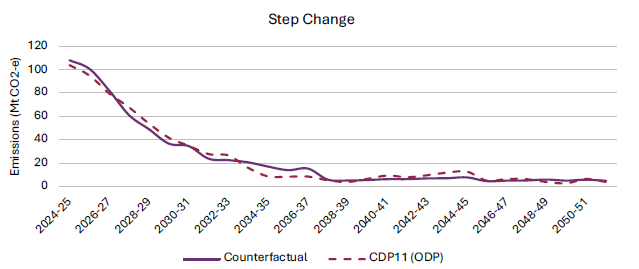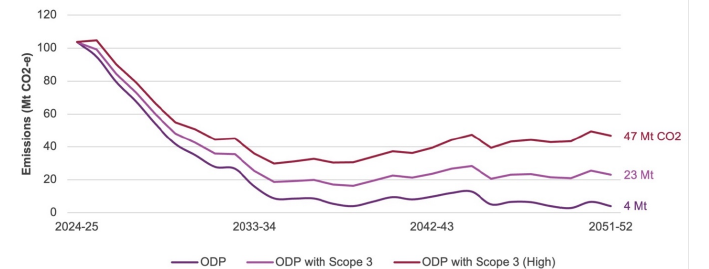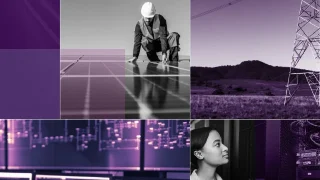
The Centre for Independent Studies welcomes the opportunity to respond to the Australian Energy Regulator’s review of the Cost Benefit Analysis (CBA) Guidelines, the Regulatory Investment Test (RIT) application guidelines and RIT instruments (collectively referred to as the Guidelines).
The CIS is a leading independent public policy think tank in Australia. It has been a strong advocate for free markets and limited government for more than 40 years. The CIS is independent and non-partisan in both its funding and research, does no commissioned research nor takes any government money to support its public policy work.
When considering how the value of emissions reduction should be incorporated in the AER’s guidelines, it is critical that:
- Emissions reductions benefits are not double counted, especially due to the existing carbon budget in the ISP;
- Guidelines are as simple as possible; and
- The price or value of carbon is explicit to ensure transparency for consumers.
Regarding the recent rule change Improving the workability of the feedback loop, the guidelines should be updated to reflect the AER’s responsibility to evaluate a project in light of a material change in circumstances to ensure that no protections are removed for consumers by this rule change.
Valuing emissions reduction
It is critical that:
- Emissions reductions benefits are not double counted;
- Guidelines are as simple as possible; and
- The price or value of carbon is explicit.
This submission makes these outcomes a priority for each of the questions below.
How should emissions reduction benefits be included in the RIT and cost benefit analysis guidelines?
Emissions reductions benefits, which are already included implicitly, should be included in future in the following ways:
-
- Carbon budgets should be removed if emissions reductions benefits are added.
- If carbon budgets are retained in the ISP, VER should apply to RIT-Ds only. Both the ISP and RIT-Ts should be exempt from VER because it has no substantive effect and makes the model more complex and opaque.
- If carbon budgets are retained, the implied price of carbon should be calculated and made explicit so the difference between the implied price and the VER is clear.
The case for the second recommendation is that including VER has minimal effects and complicates deriving a meaningful VER in RIT-Ts. Richard Linton from ACIL Allen noted this during the AER seminar on 14 May 2024:
“Since the ISP already factors in this [implied cost of carbon], introducing a separate VER mechanism could result in double-counting the emissions reduction benefits, depending on the baseline. This overlap complicates the derivation of a meaningful VER when performing a cost-benefit analysis based on the ISP.”[1]
Benefits would be minimal (in the ISP and RIT-Ts) if the AER’s proposal on page 9 was implemented with ISP carbon budgets left in place. Since the Optimal Development Path (ODP) and the counterfactual development path (the proposed base case) have similar carbon emissions in all scenarios due to model constraints (see Figure 1), actionable projects will show a negligible carbon reduction benefit in their CBAs. This is because the ISP constrains the carbon budget across all scenarios and candidate development paths (CDPs), limiting the explicit emissions reductions that can be attributed to individual projects.
Regulatory Investment Tests (RIT-Ts) face the same problem because the proposed base case is the ODP, which meets the carbon budget. Any given project would have small emissions reduction benefits.
Figure 1. Emissions trajectory of ODP and counterfactual development path across Step Change scenario in the Draft 2024 ISP.

Intertemporal differences are also not a persuasive reason to apply VER to ISP and RIT‑T projects. Richard Linton said the following in the consultation webinar:
“So when a scenario is run with and without, let’s say, a network project, they still result in the same kind of non-emissions within each of the carbon budget periods, and that’s because the carbon budget’s an input or a constraint.”
The purpose of both the carbon budgets and VER is to reduce emissions rather than create fine-grained incentives for intertemporal smoothing. For that reason, VER should not be applied to the ISP or RIT‑Ts on these grounds.
Do you have any views on the option to include the VER in the inputs to market modelling as a cost ($/MWh) on fossil-fuel generators in terms of both its application and the potential outcomes from its application?
It is critical, for reasons outlined in more detail in the next section (regarding fixed and floating carbon markets) that the VER is either imposed on generators, and carbon budgets removed, allowing the volume of carbon emissions to float and respond to incentives; or carbon budgets are kept. Otherwise, two mechanisms designed to bring about the same effect are being implemented simultaneously.
VER should not be included as a cost on fossil-fuel generators. This approach unnecessarily complicates the modelling process and reduces transparency because the benefit becomes ‘implicit’ in CBA and RIT processes down the line.
Do you have any views on the implications of the current carbon budget methodology remaining in place at the ISP input stage while the VER contributes to the assessment of the relative net benefit of different development pathways and investment options?
Carbon budgets should not be used as a constraint on system emissions at the same time as a VER is used to assess the relative benefit of options. If the carbon budgets remain in place, then the implicit price should be measured and made explicit. This way, interactions with VER are clear. This is important because the carbon budgets create an implicit price, and the VER introduces a second price.
Carbon prices can be set in two ways:
-
- Fixed volumes and floating prices; or
- Floating volumes and fixed prices.
A combination of both, with fixed prices and fixed volumes, will ultimately require either the price or volume to be allowed to float. If a second price is imposed without removing the first it must act as a floor or a ceiling.
The ISP currently fixes the volume of emissions (with carbon budgets) and allows an ‘implicit’ or ‘implied’ price of carbon to float in order to meet those budgets. VER introduces a second price. Not only does this create the risk of double-counting the value of emissions reductions, but it also makes any strategy to avoid this double-counting particularly complex as it invisibly interacts with the first, implicit price.
Page 11 of the consultation paper states that two prices don’t conflict but ‘enrich’ the analysis:
“… without [carbon budgets] the scenarios would be less useful in trying to map the possible different future states of the world. As such, the use of carbon budgets does not conflict with the inclusion of an emissions reduction benefit in the cost benefit analysis, but rather enriches the analysis.”
This is incorrect. While scenarios may be less useful as a result of removing carbon budgets, it does not follow that combining a VER with carbon budgets ‘enriches’ the analysis. Instead, it complicates it needlessly, and leaves room for unnecessary costs or double counting. If both must be included, they should both be explicit prices which are applied to the modelling consistently, with a clear policy regarding the behaviour of the fixed price as a floor or ceiling on the floating price.
Are there alternative approaches to estimating an emissions reduction benefit, and if so, what are the advantages and disadvantages of alternative approaches that should be considered?
The simplest method remains choosing either the carbon budgets (to fix volume) or VER (to fix price). If neither of these options is selected, the AER should nonetheless try to ensure the following:
-
- Emissions reduction benefits are not double counted;
- Guidelines are as simple as possible; and
- The pricing mechanism is explicit.
One suggestion for how to satisfy all three of these is to ensure that the implicit price that results from carbon budgets is measured, and the interaction with VER (which must behave as either a floor or ceiling) is specified and applied carefully.
Which additional material factors should be considered in modelling emissions? How should data to support these factors be sourced? Should the AER consider including specific guidance on any of the factors?
The scope of emissions factors should be consistent with existing standards to ensure that the ISP is as technology agnostic as possible.
Scope 3 emissions should be included when assessing different technology options, as it otherwise incentivises the use of technologies and options which hide emissions in Scope 3 by consuming more material, or by exporting emissions-intensity offshore.
The Greenhouse Gas Protocol ‘Scope’ system provides the international standard to which both the ISP and DCCEEW currently adhere. In this system, Scope 1 and 2 only include direct emissions and purchased electricity, steam, heating and cooling emissions. In the black coal production example given in the consultation paper, fugitive gas emissions are excluded from these Scopes, and included in ‘indirect’ Scope 3 emissions produced upstream from the energy source in question. See the Figure 5.2 on page 31 of the Greenhouse Gas Protocol ‘Corporate Value Chain Accounting and Reporting Standard’ for a clear diagram showing this.
Scope 3 (indirect or ‘embodied’) emissions are a more holistic measure that would include fugitive gas emissions from black coal production. However, Scope 3 includes embodied emissions for cleaner sources such as solar, wind, and nuclear. The ISP does not currently include these emissions, and such a change would be a substantial one.
If Scope 3 emissions are to be included, the Scope 3 emissions of wind turbines, solar panels, batteries, and other emissions sources must be factored in alongside network and fossil fuel generator infrastructure. Including these emissions has the potential to substantially change the emissions trajectory of the ODP, depending on how it is measured (see Figure 2).[2]
Figure 2. Projected emissions intensity in the ISP’s Optimal Development Path, with CIS’s central and high estimates of emissions intensity if lifecycle emissions for solar, wind, and batteries are included.

With respect to the factor of “emissions reductions in other sectors as a direct result of the network investment decisions”, there is a risk of uncertainty around the implications of a given investment, which is compounded by the lack of an ex-post review mechanism.
Allowing emissions from EV charging infrastructure to be included in the VER creates a substantial risk that distribution networks can claim benefits from VER that do not eventuate. This risk is heightened by the lack of any ex-post review of benefits claimed in a RIT, which was an issue raised in the AEMC’s recent webinar for the rule change Managing ISP project uncertainty through targeted ex post reviews. Distribution networks providing infrastructure that facilitates EV charging does not guarantee a reduction in vehicle emissions; the choice to swap a petrol car for an EV is one that consumers alone can make. If a distribution project approved due to substantial VER benefits from reducing vehicle emissions does not end up resulting in the assumed level of EV uptake and associated emissions reductions, there is no ex-post mechanism for the AER to remedy this. Therefore, including vehicle emissions in the scope of the VER opens the gate to consumers paying for projects that do not reduce emissions.
Improving the workability of the feedback loop
In a webinar on 2 April 2024 regarding the 2024 Draft ISP, Eli Pack said that in the context of a project being approved on a Draft ISP:
“What would happen if those projects were removed from the final ISP? Even though we’ve done a feedback loop for them, then that would be a material change of circumstance that the regulator would then question the transmission companies on. And then that would set them further back. So there’s been certainly no removal of protection in terms of consulting against these.”[3]
In order to ensure that no protections are in fact removed for consumers by this rule change, the guidelines should be updated to reflect the regulators’ responsibility to evaluate a project in light of a material change in circumstances.
In general, the guidelines should ensure the regulator requires the project follows the path it would have followed had the feedback loop occurred using the Final ISP. For example, if a project is removed from the Final ISP, then the guidelines should require the regulator to pause or cancel the project, and rescind any approvals given for financial cost recovery.
Photo by Skitterphoto.
Endnotes
[1] AER consultation webinar, 11:19.
[2] Zoe Hilton, Aidan Morrison, Alex Bainton, and Michael Wu, ‘The Six Fundamental Flaws Underpinning the Energy Transition’, CIS Analysis Paper 67, May 2024. https://www.cis.org.au/publication/the-six-fundamental-flaws-underpinning-the-energy-transition/.
[3] AEMO Draft 2024 Integrated System Plan submission reflection webinar. https://www.youtube.com/watch?v=AGcNZUa1DvI.








